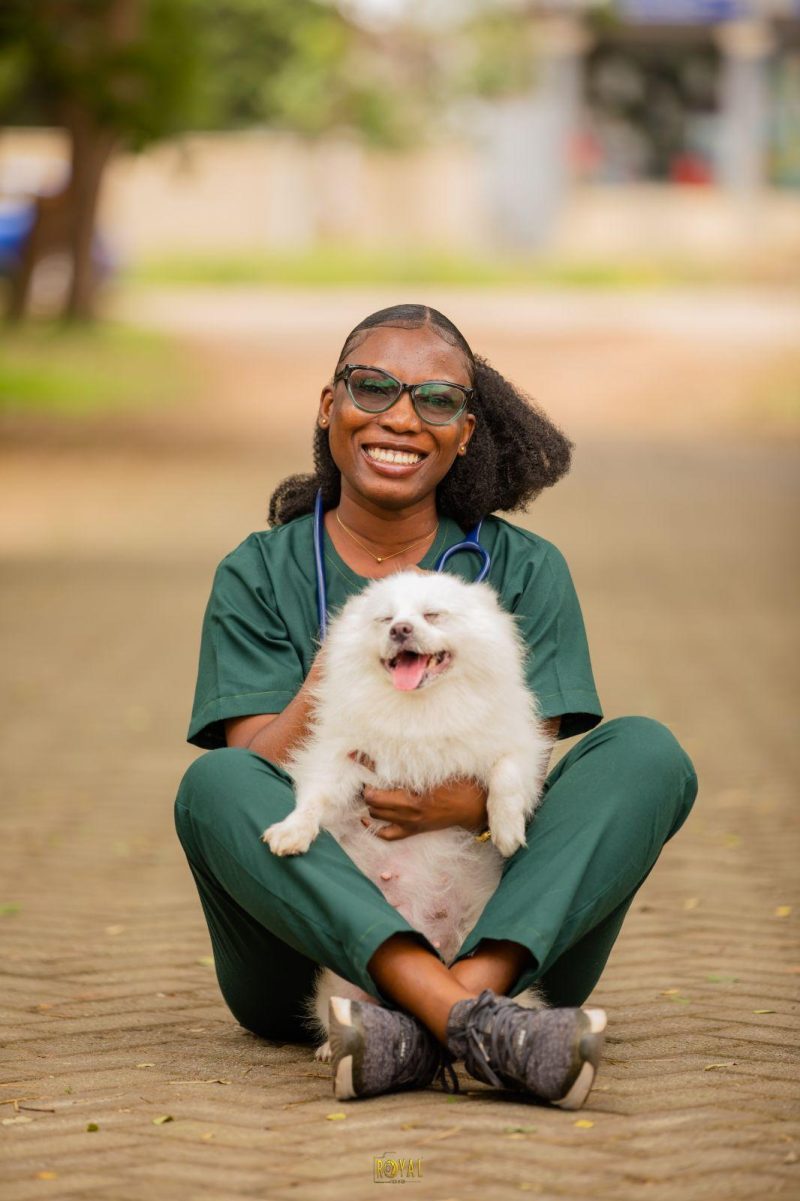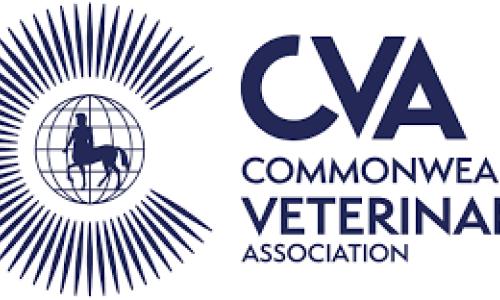Meet Dr. Akosua Kumi Nyarko, Veterinary House Officer at the Small Animal Teaching Hospital, University of Ghana
Dr Akosua Kumi Nyarko the West African regional prize winner of the Commonwealth Veterinary Association essay competition. Dr Nyarko's essay explored 'what veterinary sustainability looks like in your country'. Here we find out abit more about Dr Nyarko and their day to day life.
Hannah Davies
Hi! Please tell us who you are and what you do.
My name is Dr. Akosua Kumi Nyarko and i am a Veterinary House Officer at the Small Animal Teaching Hospital, University of Ghana.
What is your current role and professional interests?
My current role at the clinic is diagnosing, treating and preventing diseases in animals focusing on prevention. I also assist final year students during their clinical rotations. My professional interests are the human-animal bond, infectious diseases and zoonoses.
What does a typical day look like for you?
A typical day starts at 8am and ends at 5pm. We see a wide variety of review cases, general and routine appointments, as well as emergency cases. I am also involved with running wellness clinics, reviewing lab reports and writing medical records.

What is your favourite part of the job?
I really value getting to see animals becoming better after treatment and how happy that makes their owners. I also really enjoy the puppy wellness visits.
What is the most challenging part of your job?
Breaking bad news to a pet owner and the impacts on the human-animal bond.
Do you have any tips for achieving a good work-life balance?
I think it is really important to have a social life which includes your hobbies. Take rests when you are tired. Don't forget to delegate. And don't be afraid to say no!
How do veterinary professionals currently help to drive sustainability?
We encourage farmers to use sustainable practices to prevent and reduce disease transmission, such as reducing the use of antibiotics, cleaning up stalls regularly to prevent disease transmission. One Health and animal welfare is key to ensure sustainability of our agricultural, and human livelihood. We also encourage the use of technological advancement and innovation to reduce the impact of carbon footprints on the environment.
What do you feel are the major opportunities to drive sustainability in the veterinary sector?
Because we work with both humans and animals, we have the ability to understand the influence of poor health on every aspect of our world - in humans, animals and the environment. We have the ability to educate locals to create a change due to our work.
What are your top tips for veterinary professionals wishing to take the first steps to drive sustainability in their roles?
1. Reduce single use plastics at work by using recycled materials or refillable containers
2. Reduce the use of anaesthetics (greenhouse gases)
3. Talk to clients about your sustainability when they visit your clinic
4. Organise campaigns for local community
If you could wave a magic wand and make one improvement to drive the sustainability impact of the veterinary profession, what would it be?
To raise awareness within the veterinary community and collaborate with researchers to create sustainable products.
